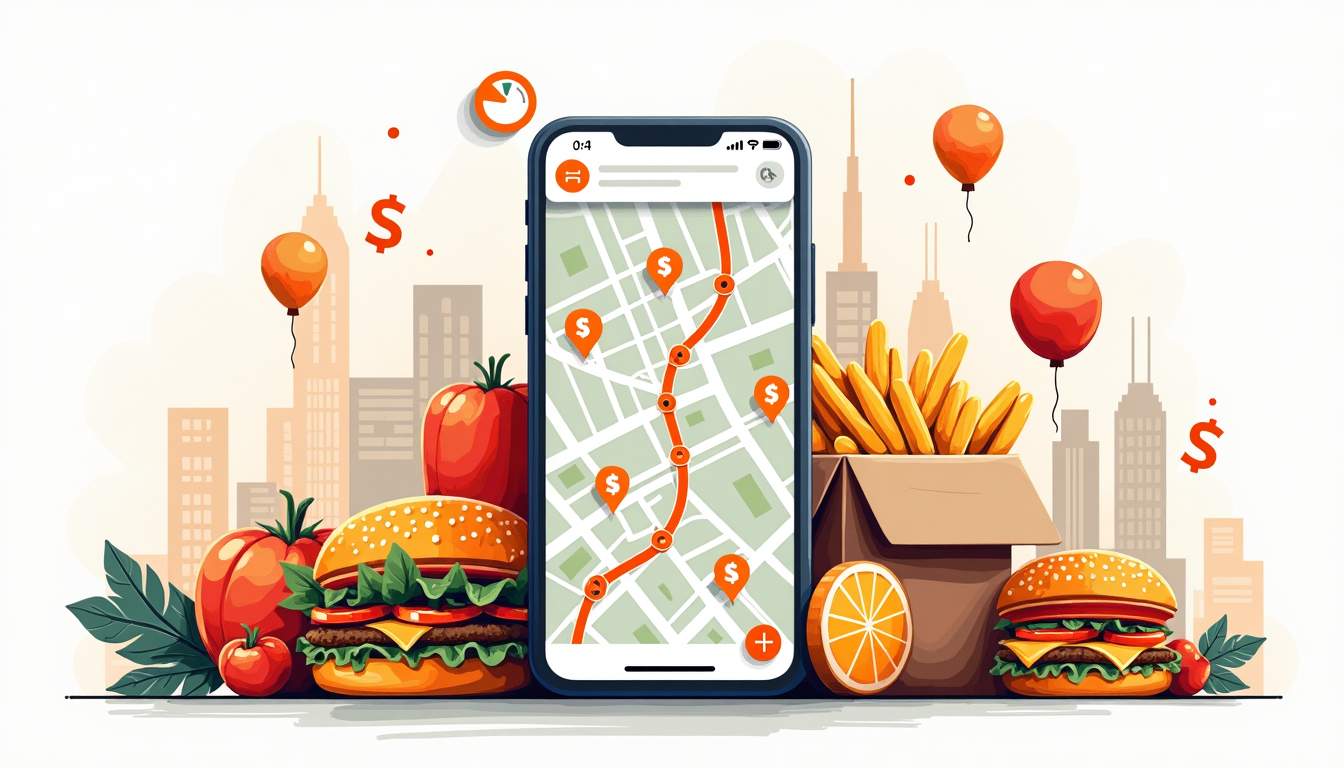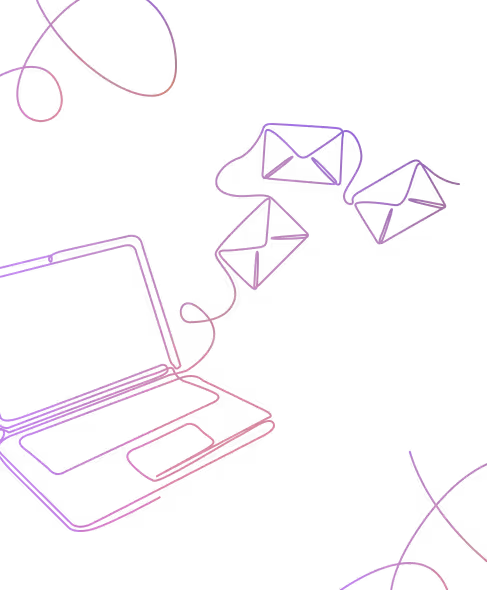The global food delivery app market has become one of the fastest-growing sectors in the digital economy. From ordering a quick lunch via Uber Eats to browsing late-night options on DoorDash, food delivery has shifted from a convenience to a daily habit.
According to Statista, the industry was valued at $136 billion in 2022 and is projected to surpass $200 billion by 2025. For entrepreneurs and restaurant groups, this growth represents a golden opportunity. But building your own platform comes with a big question:
How much does it cost to develop a food delivery app?
The short answer: $25,000–$50,000 for a basic MVP, $50,000–$120,000 for a mid-tier app, and $150,000–$300,000+ for advanced, enterprise-level solutions.
The long answer requires breaking down the many variables that influence cost, from features and platforms to team location, backend infrastructure, and ongoing expenses.
Why Invest in a Food Delivery App?
Food delivery apps are not just a utility for users—they’re multi-revenue businesses:
- Delivery fees charged per order.
- Commissions taken from restaurant partners.
- Subscriptions like Uber Eats Pass or DashPass.
- Paid promotions and advertising inside the app.
During the pandemic, these apps became lifelines for restaurants. Even now, 70% of diners say they’re more likely to order delivery than pre-2020. Restaurants without delivery options risk losing customers. Owning your own platform provides control over:
- Branding (customers order under your name, not DoorDash’s).
- Customer data (emails, preferences, order frequency).
- Profitability (reduced reliance on third-party platforms).
Case Study: DoorDash
Launched in 2013, DoorDash began as a simple MVP for connecting restaurants to customers with drivers. Within a decade, it became the largest food delivery service in the U.S., valued over $30 billion. Their early lean approach shows how even a basic version can grow into a category leader with the right execution.
Key Factors That Influence Food Delivery App Development Cost
1. App Complexity and Features
The biggest cost driver is complexity.
Essential features (MVP level):
- User registration and login.
- Restaurant listings with menus.
- Search, filters, and ratings.
- Cart, order placement, and order tracking.
- Secure payment gateway.
- Push notifications.
- Admin panel to manage restaurants and orders.
Advanced features (premium builds):
- AI-based menu recommendations.
- In-app chat support.
- Loyalty programs and gamification.
- Multi-language support.
- Voice ordering via Siri/Alexa/Google Assistant.
- Integration with smartwatches and wearables.
- Carbon footprint tracking or eco-friendly badges.
The jump from “basic” to “advanced” can triple your cost.
2. Platform Choice: iOS, Android, or Both
- Single platform (iOS or Android): cheapest way to test the market.
- Dual native apps: best experience but nearly doubles cost.
- Cross-platform (React Native, Flutter): middle ground, reducing cost/time by ~30–40%.
3. Design and User Experience
Design is critical in this industry—users expect a seamless, intuitive experience. Smooth flows, polished visuals, and frictionless checkout can make or break adoption.
A basic design may cost $10,000–$15,000. High-end custom UX with animations, testing, and accessibility can cost $50,000+.
Case Study: Uber Eats
Uber Eats’ sleek design—with real-time courier tracking, personalized suggestions, and easy reordering—cost millions to perfect. But that investment drives retention and market dominance.
4. Backend Infrastructure and APIs
Your backend manages logins, menus, payments, driver routing, and notifications. A lightweight backend may cost $10,000–$20,000. Enterprise-level, scalable systems with analytics, load balancing, and real-time logistics can cost $100,000+.
5. Third-Party Integrations
Food delivery apps rely heavily on integrations:
- Payments: Stripe, PayPal, Apple Pay.
- Maps & navigation: Google Maps, Mapbox.
- SMS/email: Twilio, SendGrid.
- Analytics: Firebase, Mixpanel.
Each adds thousands in integration and ongoing costs.
6. Location and Expertise of Development Team
Rates vary globally:
- North America/Western Europe: $100–$200/hr.
- Eastern Europe/LatAm: $40–$100/hr.
- India/Southeast Asia: $20–$50/hr.
7. Maintenance and Updates
Budget 15–20% of your initial cost per year for bug fixes, updates, and scaling.

Food Delivery App Development Cost Breakdown
- Basic MVP: $25,000–$50,000
One platform, essential ordering and payment features. - Mid-level app: $50,000–$120,000
iOS + Android, polished UI, push notifications, reviews, admin dashboard. - Advanced app: $150,000–$300,000+
AI-driven features, live chat, loyalty programs, multi-language, advanced backend.
Case Study: Zomato
India’s Zomato grew from a menu-listing site to a billion-dollar food delivery app. Scaling required heavy investment in marketing, partnerships, and backend infrastructure. Their story highlights how post-launch growth often costs more than initial development.
Hidden and Ongoing Costs
Building the app is only the beginning. Expect ongoing expenses:
- Cloud hosting: $500–$10,000/month depending on orders.
- App store fees: Apple ($99/year), Google ($25 one-time), plus 15–30% commission on in-app payments.
- Marketing & user acquisition: $5,000–$50,000/month.
- Customer support: $1,000–$10,000/month.
- Content & partnerships: restaurant onboarding, campaigns, loyalty incentives.
How to Reduce Development Costs Without Sacrificing Quality
- Start with an MVP: validate core flows before scaling.
- Use cross-platform development: one codebase, both platforms.
- Leverage APIs: payments, maps, chat—don’t reinvent the wheel.
- Outsource strategically: offshore + strong project management.
- Phase features: prioritize essentials, add extras later.
De-Risking Development with Wednesday Solutions’ Sprint Zero
One of the biggest risks in building a food delivery app isn’t overspending—it’s building the wrong product. Many founders pour $100,000+ into development only to discover users don’t want half the features.
This is where Wednesday Solutions’ Launch program makes a difference. Their AI-driven product engineering sprints accelerate iteration, cut waste, and validate ideas before heavy investment.
The entry point is Sprint Zero: a four-week structured program designed to deliver real outputs that de-risk your investment. By the end, you get:
- A product roadmap aligned with business goals.
- A scalable technical architecture to avoid costly rebuilds.
- A UI/UX style guide for consistent design.
- A working freemium tool to start gathering user feedback immediately.
Most importantly, Sprint Zero is fixed-price and risk-free. If the deliverables don’t meet expectations, you get your money back.
For founders considering whether to spend $50k, $100k, or more, Sprint Zero ensures you’re investing wisely and building toward product-market fit—not just a feature checklist.
Future Trends Shaping Food Delivery App Costs
- AI & Machine Learning – personalized recommendations, predictive delivery times.
- Contactless delivery & safety – post-pandemic expectations.
- Smart devices – voice ordering via Alexa/Google Assistant, smartwatch apps.
- Sustainability – eco-friendly packaging, carbon footprint trackers, local sourcing.
Final Thoughts
The cost of food delivery app development in 2025 spans from $25,000 for an MVP to $300,000+ for advanced platforms. But the real key is not just “how much,” but how smartly you spend.
- Start lean.
- Prioritize features users value.
- Budget for ongoing marketing and maintenance.
- Learn from case studies like DoorDash, Uber Eats, and Zomato.
- Consider structured, low-risk programs like Wednesday Solutions’ Sprint Zero to validate and de-risk before committing major capital.
Done right, your food delivery app won’t just compete—it can thrive in a $200B+ market.






